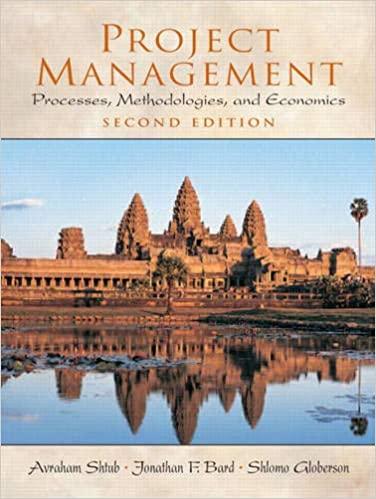Consider a project with which you are familiar and describe it briefly. For each classification scheme discussed
Question:
Consider a project with which you are familiar and describe it briefly. For each classification scheme discussed in Section 2, classify each resource used in the project.
Section 2:
Project resources can be classified in several ways. One approach is based on accounting principles, which distinguish between labor costs (human resources), material costs, and other “production” costs, such as subcontracting and borrowing. This classification scheme is very useful for budgeting and accounting. Its major drawbacks are that it does not specifically include the cost of the less tangible resources such as information (blueprints, databases), and it does not capture the main aspect of project resource management (i.e., the availability of resources).
A second approach is based on resource availability. Some resources are available at the same level in every time period (e.g., a fixed workforce). These are renewable resources. A second class consists of resources that come in a lump sum at the beginning of the project and are used up over time. These are depletable resources, such as material or computer time. A third class of resources is available in limited quantities each period. However, their total availability throughout the project is also circumscribed. These are called doubly constrained resources. The cash available for a project is a typical example of a doubly constrained resource. Based on this classification, one objective in using renewable resources is to minimize idle time or to maximize utilization. An objective in using depletable resources is to maximize “effectiveness”—the ratio between output and input.
A third classification scheme is similarly based on resource availability. The first class includes all “nonconstrained” resources—those that are available in unlimited quantities for a cost. A typical example is untrained labor or general-purpose equipment. The second class includes resources that are very expensive or impossible to obtain within the time span of the project. Special facilities, such as the use of a supercomputer, and technical experts who work on many projects are two such examples. This class also includes resources of which a given quantity is available for the entire project, such as a rare type of material that has a long lead time.The quantity ordered at the beginning of the project must last throughout, because of its limited supply.
Step by Step Answer:

Project Management Processes Methodologies And Economics
ISBN: 9780130413314
2nd Edition
Authors: Avraham Shtub, Jonathan F. Bard, Shlomo Globerson





